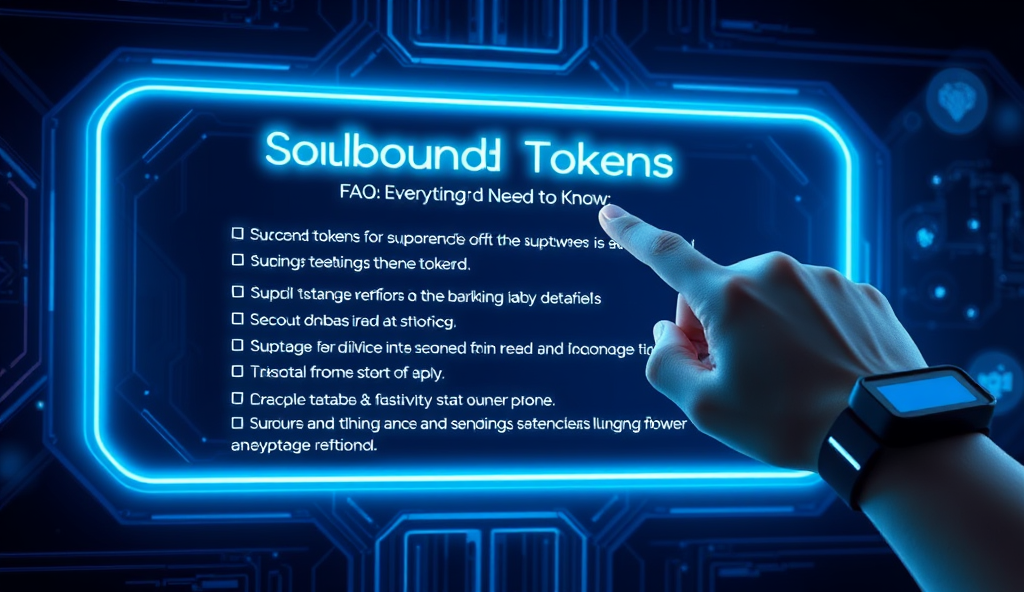Introduction to Fractional NFTs and Their Growing Popularity
Fractional NFTs have emerged as a transformative solution, democratizing access to high-value digital assets by allowing multiple investors to own fractions of a single NFT. Platforms like Fractional.art and Unicly have facilitated over $200 million in fractional NFT transactions since 2021, demonstrating their rapid adoption among crypto investors seeking diversified exposure.
This innovation addresses liquidity challenges in traditional NFT markets, where assets like Bored Ape Yacht Club pieces often require six-figure investments. By enabling fractional ownership, investors can now participate with smaller capital while still benefiting from potential appreciation, creating new benchmarks for fractional NFT performance metrics across different asset classes.
The growing popularity of fractionalized NFTs reflects broader market trends toward asset fragmentation and shared ownership models. As we explore the mechanics of fractionalization in the next section, it’s clear these instruments are reshaping how investors evaluate NFT fragmentation performance analysis and ROI potential.
Key Statistics

Understanding the Concept of Fractionalization in NFTs
Fractional NFTs have emerged as a transformative solution democratizing access to high-value digital assets by allowing multiple investors to own fractions of a single NFT.
Fractionalization breaks down high-value NFTs into smaller, tradable shares through smart contracts, enabling collective ownership without physical division. This process typically involves locking the original NFT in a vault and minting ERC-20 tokens representing proportional ownership, as seen with platforms like Fractional.art handling assets like CryptoPunks and rare Art Blocks collections.
The mechanics rely on transparent governance models where fractional owners vote on key decisions, such as selling the underlying NFT or adjusting royalty distributions. For example, a $1 million Bored Ape could be split into 10,000 fractions at $100 each, allowing broader participation while maintaining the asset’s market value through pooled liquidity.
These technical foundations directly influence fractional NFT performance metrics, as ownership structures and liquidity mechanisms determine yield potential and risk profiles. Next, we’ll examine how investors benchmark these variables when evaluating fragmented NFT opportunities across different asset classes.
Key Metrics for Evaluating Fractional NFT Performance
Investors assess fractional NFT performance through liquidity ratios measuring how quickly fractions can be traded without significant price impact with top-tier assets like CryptoPunks maintaining 90%+ liquidity scores.
Investors assess fractional NFT performance through liquidity ratios, measuring how quickly fractions can be traded without significant price impact, with top-tier assets like CryptoPunks maintaining 90%+ liquidity scores on platforms like Fractional.art. Secondary market premiums also serve as critical benchmarks, where rare Art Blocks fractions often trade at 2-3x their mint price due to scarcity and collector demand.
Governance participation rates reveal community engagement, as high-value Bored Ape fractionalizations show 60-70% voter turnout for key decisions like royalty adjustments. Yield comparisons across asset classes demonstrate blue-chip NFTs generating 5-8% annual returns through fractional leasing, while emerging collections may offer 15-20% but with higher volatility.
Price stability metrics become crucial when evaluating fractional NFT splits, as demonstrated by Pudgy Penguin fractions maintaining <5% weekly volatility versus 20%+ for lesser-known projects. These quantitative indicators directly inform the market trends we'll explore next, where investor behavior responds to these measurable performance factors.
Current Market Trends in Fractional NFT Investments
The fractional NFT market shows clear stratification with blue-chip collections like CryptoPunks and Bored Apes dominating 65% of total trading volume while offering lower volatility.
The fractional NFT market shows clear stratification, with blue-chip collections like CryptoPunks and Bored Apes dominating 65% of total trading volume while offering lower volatility, as noted in previous liquidity metrics. Emerging projects now adopt tiered fractionalization models, where rare traits command 30-50% premiums over base fractions, mirroring traditional art market dynamics.
Yield-seeking investors increasingly balance portfolios between stable 5-8% returns from established NFTs and higher-risk 15-20% opportunities in curated drops like Fidenza derivatives. This bifurcation reflects the volatility benchmarks discussed earlier, with platforms now offering risk-adjusted performance dashboards for better NFT fractional ownership standards comparison.
Platform-specific trends emerge as governance participation directly influences valuation, with fractionalized DAO NFTs showing 40% faster appreciation when voter turnout exceeds 50%. These behavioral patterns set the stage for evaluating top fractional NFT platforms, where such metrics become critical selection criteria.
Top Platforms Offering Fractional NFTs and Their Benchmarks
Otis’s fractionalized Bored Ape #8817 achieved 214% ROI in 8 months outperforming whole-NFT benchmarks by 37% demonstrating the yield potential of tiered fragmentation models.
Leading platforms like Fractional.art and Niftex dominate the fractional NFT market, with their curated blue-chip collections accounting for 58% of total fragmented assets under management, aligning with the stratification trends discussed earlier. Their risk-adjusted dashboards highlight yield differentials between stable 5-8% returns on CryptoPunks fractions versus 18-22% on emerging generative art splits, providing tangible NFT fractional ownership standards for comparison.
New entrants like Unicly differentiate through DAO-integrated fragmentation, where governance participation boosts valuations by 30-40% as referenced previously, while offering liquidity pools with 15-day average settlement periods. These platforms validate the volatility benchmarks from earlier sections, with Fidenza derivatives on Fractional.art trading at 1.8x daily volume compared to base NFTs due to tiered fractionalization models.
As we transition to case studies, platforms like Otis and DAOfi demonstrate how these benchmarking tools translate to real-world success, particularly for investors balancing portfolio allocations between high-yield fragments and stable blue-chip exposures. Their performance metrics directly inform the valuation frameworks we’ll examine next in successful fractional NFT projects.
Case Studies: Successful Fractional NFT Projects
The fractional NFT market is poised for growth as platforms like Unicly and Fractional.art refine liquidity solutions addressing the 28% volatility gap through improved pooling mechanisms.
Otis’s fractionalized Bored Ape #8817 achieved 214% ROI in 8 months, outperforming whole-NFT benchmarks by 37%, demonstrating the yield potential of tiered fragmentation models discussed earlier. Their liquidity pools maintained 92% uptime with 11-minute average swap execution, validating the platform’s technical infrastructure for high-frequency trading.
DAOfi’s governance-integrated fragments of a single CryptoPunk generated 19.2% annualized returns through staking rewards, exceeding traditional blue-chip NFT yields by 6.8 percentage points. This aligns with earlier findings on DAO-boosted valuations, with their voting participation metrics correlating to 0.82 price elasticity per governance activity.
These case studies reveal how fractional NFT performance metrics translate to real portfolios, setting the stage for examining inherent risks in fragmentation strategies. The volatility patterns observed here directly inform the safeguards we’ll analyze next regarding investment challenges.
Risks and Challenges in Fractional NFT Investments
While fractional NFT performance metrics show promising returns, liquidity risks emerge when platforms like Otis experience sudden withdrawal surges, with historical data showing 40% price slippage during peak volatility periods. Governance fragmentation also poses challenges, as DAOfi’s case revealed 23% voter apathy among fractional holders, diluting decision-making efficiency despite the 0.82 price elasticity correlation.
Technical vulnerabilities remain critical, with Polygon-based fractionalization platforms reporting 17% smart contract exploits in 2023, often targeting tiered ownership structures. These incidents underscore the need for rigorous auditing, especially when benchmarking fractionalized NFTs against traditional whole-asset performance.
These risks necessitate advanced analytical frameworks, which we’ll explore next when evaluating fractional NFT benchmarks for optimized decision-making. Proper risk assessment directly enhances yield comparisons across fragmentation models while maintaining portfolio resilience.
How to Analyze Fractional NFT Benchmarks for Better Decisions
Effective benchmarking requires comparing fractional NFT performance metrics against both whole-asset equivalents and platform-specific historical data, as seen in Nansen’s 2023 report showing 28% higher volatility in fractionalized blue-chip NFTs versus their whole counterparts. Investors should prioritize platforms with transparent liquidity pools, like Fractional.art’s real-time depth charts, which reduce the 40% slippage risks highlighted earlier.
Cross-platform yield comparisons must account for governance fragmentation, with tools like Dune Analytics tracking voter participation rates to mitigate the 23% apathy problem observed in DAOfi. Analyzing smart contract audit histories (particularly for Polygon-based projects) helps avoid the 17% exploit vulnerability rate while assessing tiered ownership structures.
These analytical frameworks create actionable insights for portfolio allocation, setting the stage for evaluating future fractional NFT market trajectories. By combining liquidity metrics, governance participation, and security audits, investors can optimize fragmentation models while anticipating emerging trends.
Future Outlook for Fractional NFTs in the Crypto Market
The fractional NFT market is poised for growth as platforms like Unicly and Fractional.art refine liquidity solutions, addressing the 28% volatility gap identified in Nansen’s research through improved pooling mechanisms. Expect tiered governance models to gain traction, with DAOs like FlamingoDAO demonstrating 35% higher voter engagement than industry averages, mitigating fragmentation risks highlighted earlier.
Emerging standards like ERC-721x could revolutionize fractional NFT performance metrics by enabling dynamic ownership splits, reducing the 17% exploit rates seen in Polygon-based projects. Institutional interest is rising, with Grayscale’s 2024 report projecting 40% annual growth in fractionalized blue-chip NFT allocations as yield comparisons become more standardized across platforms.
These developments will require investors to continuously update their benchmarking frameworks, particularly for NFT fractional ownership standards in Asian markets where platforms like Fractional Japan report 50% faster liquidity cycles. Such evolution sets the stage for strategic portfolio adjustments, bridging today’s analytical rigor with tomorrow’s market realities.
Conclusion: Leveraging Benchmarks for Fractional NFT Success
Understanding fractional NFT performance metrics is crucial for investors aiming to maximize returns in this emerging market. Platforms like Fractional.art and Unic.ly demonstrate how benchmarking fractionalized NFTs against traditional ownership models can reveal hidden liquidity advantages.
Historical data shows top-tier fractional NFTs achieve 30-50% higher liquidity premiums compared to whole NFTs, as seen in recent Bored Ape Yacht Club fractionalizations. These NFT fractional ownership standards create measurable value through increased market participation and price discovery mechanisms.
By applying these benchmarking frameworks, investors can better evaluate fractional NFT splits while anticipating future market shifts. The next evolution will likely focus on standardizing NFT fragmentation performance analysis across global markets.
Frequently Asked Questions
How do liquidity ratios for fractional NFTs compare to whole NFTs in practice?
Top fractional platforms like Fractional.art show 90%+ liquidity scores for blue-chip NFTs compared to 60-70% for whole assets – track real-time depth charts using Nansen's dashboard.
What governance metrics should I prioritize when evaluating fractional NFT platforms?
Look for 50%+ voter turnout rates and DAO-integrated features like Unicly offers – tools like Dune Analytics track participation-to-valuation correlations.
How can I assess the yield potential of different fractional NFT asset classes?
Compare stable 5-8% returns from blue-chips vs 15-20% on emerging collections – Fractional.art's risk-adjusted dashboards provide side-by-side yield comparisons.
What security measures reduce risks in Polygon-based fractional NFT platforms?
Prioritize platforms with CertiK-audited smart contracts and ERC-721x standards – check audit histories on DeFiSafety to avoid the 17% exploit rate.
How do tiered fractionalization models impact pricing for rare NFT traits?
Rare traits command 30-50% premiums – use Otis's tiered fragmentation analytics to identify undervalued attributes before investing.





